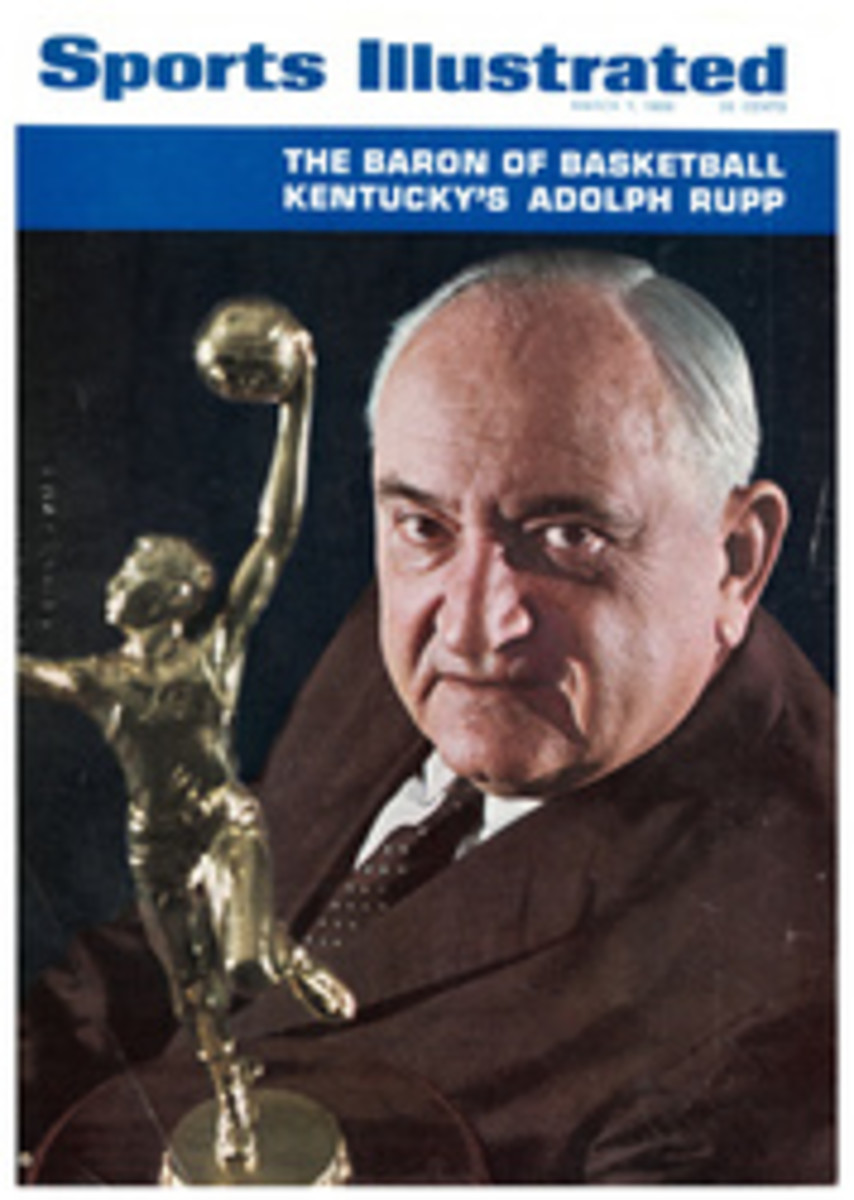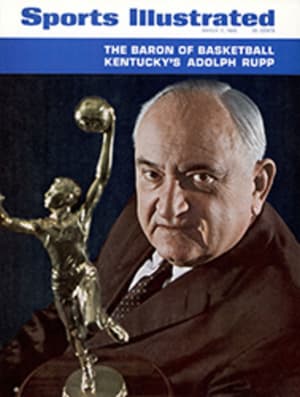
High-altitude triumph for a tough little miss
Only four times in the 60-year history of the women's world figure-skating championship had a defending titlist been dethroned in competition, but Petra Burka's crown was wobbling. "There is nothing I can do about it," she muttered at the conclusion of compulsory figures at Davos, Switzerland last week. She was so right. There was nothing, absolutely nothing to be done. The sturdy world champion from Toronto had hoped that a strong showing in school figures would help her win again. School figures count 60% in the final scoring, and it was surely in this 60% that a veteran's skill and stamina would show best. Yet here it was Saturday afternoon, the compulsory program was all over and Peggy Fleming (SI, Feb. 7), the leggy wisp from Colorado Springs, Colo., was ahead. Peggy, who took a sensational fall at the Innsbruck Olympics two years ago before a packed gallery that included several members of the Royal House of Orange, had traced and retraced her six compulsory figures with such precision that she piled up 1,233 points, leaving Petra well behind with only 1,184.2.
Carlo Fassi, the coach who worked so patiently with the 17-year-old at the Broadmoor Hotel ice school in Colorado Springs, was sure that she had made it. Peggy was not so certain. "Now," she said, "if I can only do well in the free skating."
Those who had followed Peggy Fleming's career had little doubt that she could excel in this department; the problem was one of endurance. Her grace and daring in executing complex double and flip jumps was widely known, and Dick Button, a former champion who worries more about Peggy's diet than her skating form, had said that there had been only one other skater to compare with her in the last 25 years, former world and Olympic Champion Tenley Albright. But a year ago, at the world championships in Colorado Springs, Peggy had tired badly and finished in third place.
What the doubters forgot was that in 1965 Peggy was only 16, she had been living nearer sea level in Pasadena and was able to practice only an hour a day. But Colorado Springs, where she has been living since last summer, is just as high up as Davos and Peggy made the most of it. She went to Switzerland in prime form. This was instantly apparent during the school figures, a nerve wracking ordeal under the best conditions but triply so when performed outdoors in rarefied air.
At Davos, Carlo Fassi made sure that Peggy was prepared for the high cold by engaging the West German team trainer, Curt Schumacher, to rub her legs with liniment each time she went out on the ice. After each turn Fassi would take her back to Schumacher to have the liniment rubbed off with alcohol lest it overheat her legs.
"The biggest fault of skaters," grumped Schumacher to one reporter, "is that they go out to skate cold. A boxer warms up before his bout, no? A horse needs a warmup, no? So a skater needs to keep his muscles warm when competing in the cold, yes?"
The need for such a warmup was one of the reasons cited by Petra Burka's fans in explaining her downfall. Long bothered by a circulatory problem known as Raynaud's phenomenon, Petra's legs go numb in cold weather, and she has to warm up with her boots loosely laced. Before competing, she tightens them. As the lead-off skater in her group for the free-style competition, Petra found she didn't have time for the loose-laced warmup, and during the competition she couldn't feel her legs at all. This, said her apologists, was why she completely omitted a double Salchow from her program and two-footed a double flip near the end.
It was a disappointing performance that not only failed to close the gap on Peggy Fleming but left Petra behind an otherwise undistinguished East German girl, Gabrielle Seyfert. At the end of the meet Petra Burka found herself the first defending world champion in the history of women's skating to drop to third place in a single year.
Young Miss Fleming, the first potential world champion the U.S. has produced since a tragic airplane accident in 1961 brought sudden death to an entire team of brilliant young skaters, had no such problems. In a tightly fitting, dark rose skating costume, the girl from Colorado leaped and pirouetted to the strains of Verdi, Tchaikovsky and Rossini with her usual remarkable skill—and the stamina to match, which was really the point.
Toward the end of her routine, a moment of caution threatened an otherwise flawless performance, but the judges hardly seemed to notice. One of them awarded her a 6—the mark of absolute perfection in figure skating. It was the only 6 to appear in the women's competition. When it was all over, Peggy Fleming had become the first American girl to win a world figure skating championship since Carol Heiss in 1960.
"It is her determination that makes Peggy great," said the ecstatic Fassi when it was all over. "She has an excellent disposition, which makes her forget a bad practice in 10 minutes. But at the same time, she learns from all her mistakes. There is no doubt in my mind she is the best in the world."
All Peggy could say was: "Gosh. I'm glad the big scare is over."
PHOTO
JUDGES SCORE SCHOOL FIGURES THAT BUILT BIG EARLY LEAD FOR PEGGY FLEMING

